Looking for a quick way to make use of some thawed ground beef, I paged through The Joy of Sharing and realized I already had all of the ingredients in my pantry to make “Crouton Hot Dish Casserole.” Submitted by Irene Ave, this recipe is fascinating.

It’s also surprisingly delicious. No wonder, since it’s full of satisfying sodium.
A Layered Dish
The first instruction is to “layer meat and croutons in 9 x 13-inch pan,” without specifying whether to brown the hamburger first. Given my wariness since my terrifying encounter with uncooked ground beef at the bottom of a tater tot hotdish in “Hot Dish Horror: Part II” (see https://blog.cord.edu/karlaknutson/2023/07/04/hot-dish-horror-part-ii/), I decided to go ahead and brown the meat.
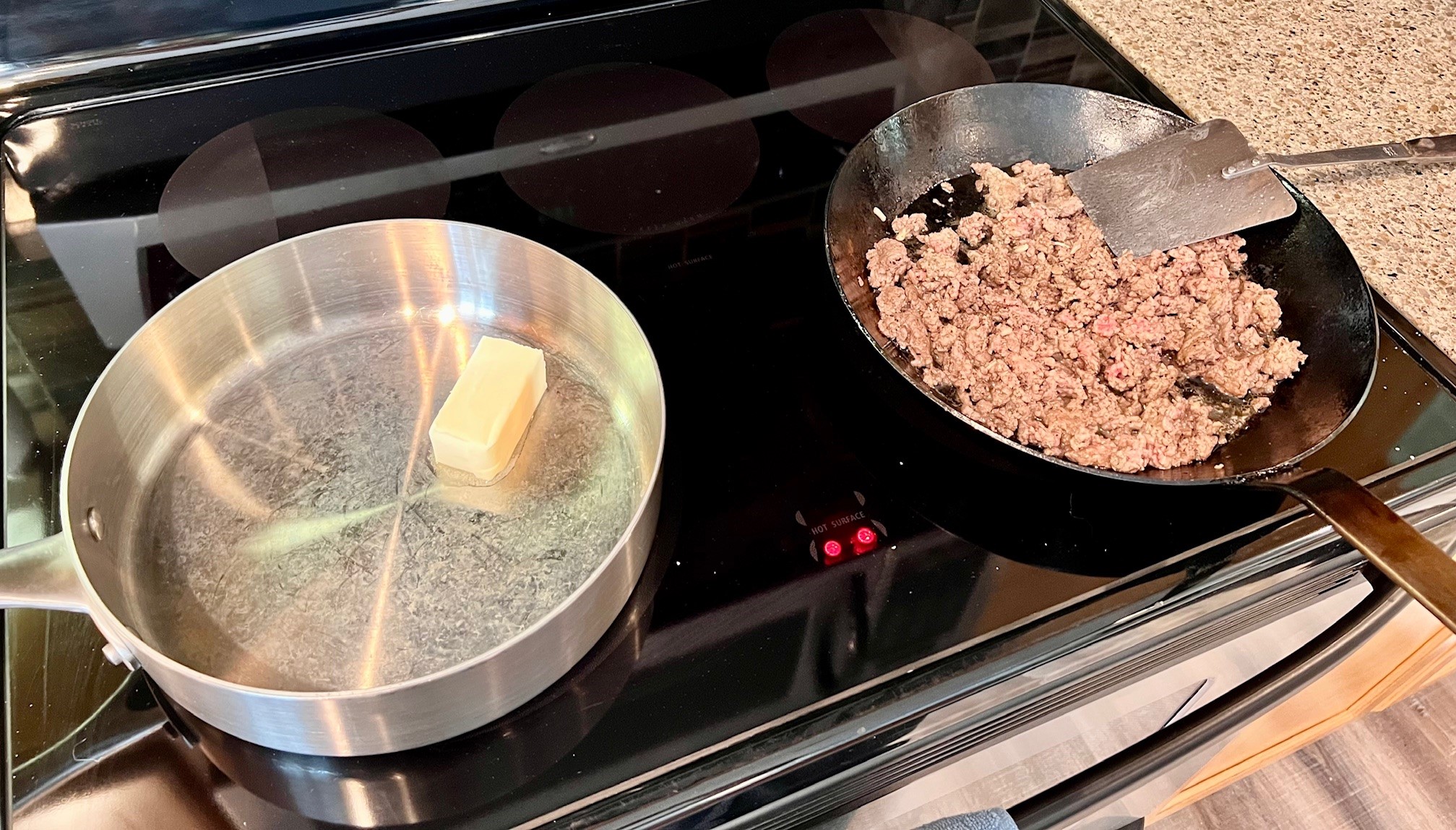
As I noted in my earlier piece, it’s rare for a hotdish or casserole to use raw ground meat but it’s not without precedent. In fact, when I wrote a column about it for The Fargo Forum (https://www.inforum.com/lifestyle/hot-dish-horror-one-womans-frightful-experience-with-a-recipe-from-the-past) , a reader wrote to me and sent me a recipe for an all-raw-ingredient hotdish from the 1950s, featuring vegetables, ground beef, and bacon. She raved about it and said it is still her favorite hotdish.
After placing the browned beef, lightly seasoned with a tiny amount of salt and a bit more freshly cracked pepper, in the cake-sized pan, I sprinkled the crouton stuffing mix (I used a box of Stove Top) over it evenly.
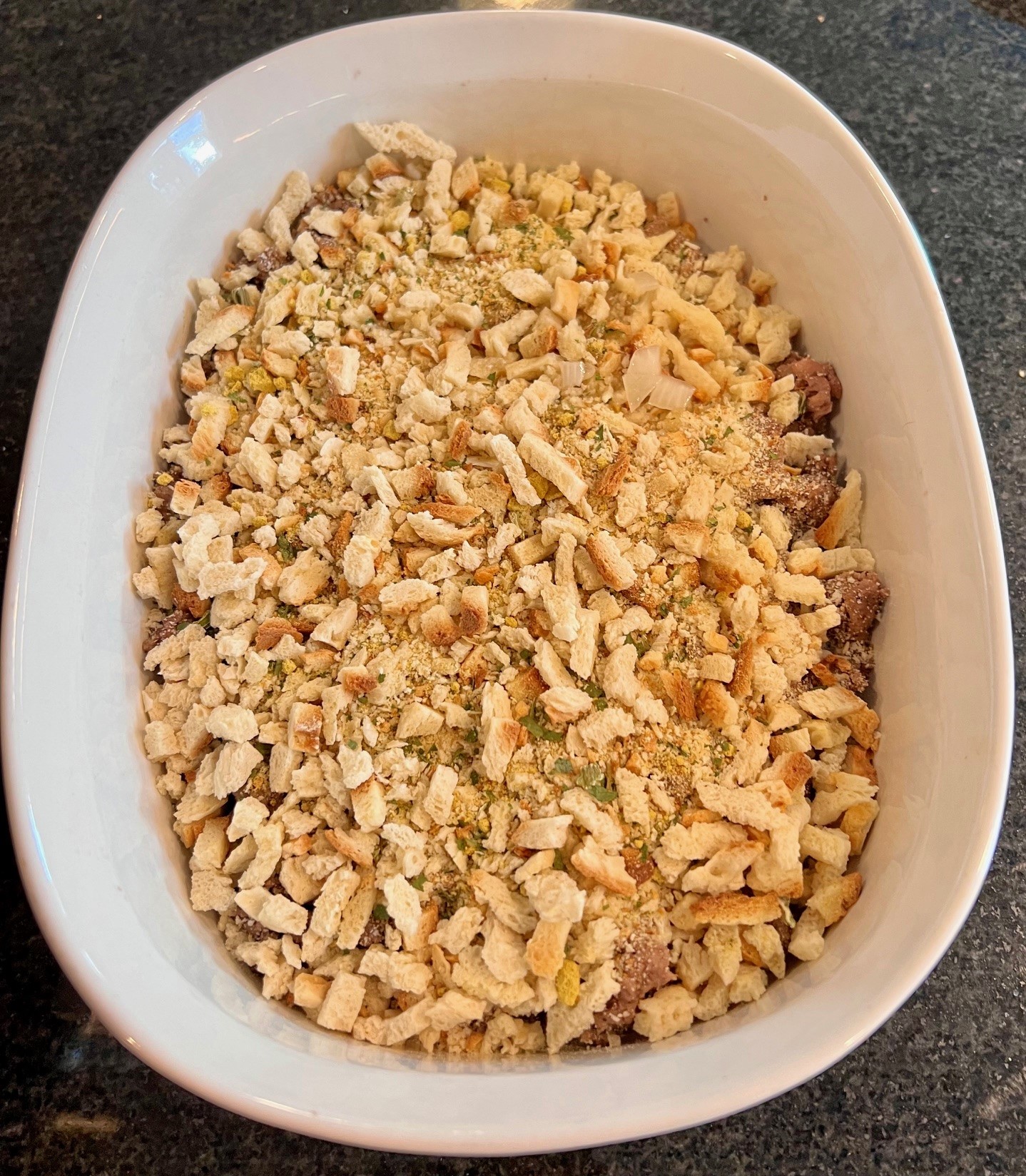
Though flummoxed by the next step, I continued to follow directions: “In saucepan mix butter, celery, onion, and water. Heat until butter melts. Pour over hamburger and stuffing mixture.” Why would you not saute the veggies in the butter first, spread them across the top of the beef and crouton layers, and then pour the cup and a half of water across all of that? Sauteing would add deeper flavor to the celery and onion, rather than this watery mixture, which I assume is intended to provide the necessary moisture for the dried croutons.
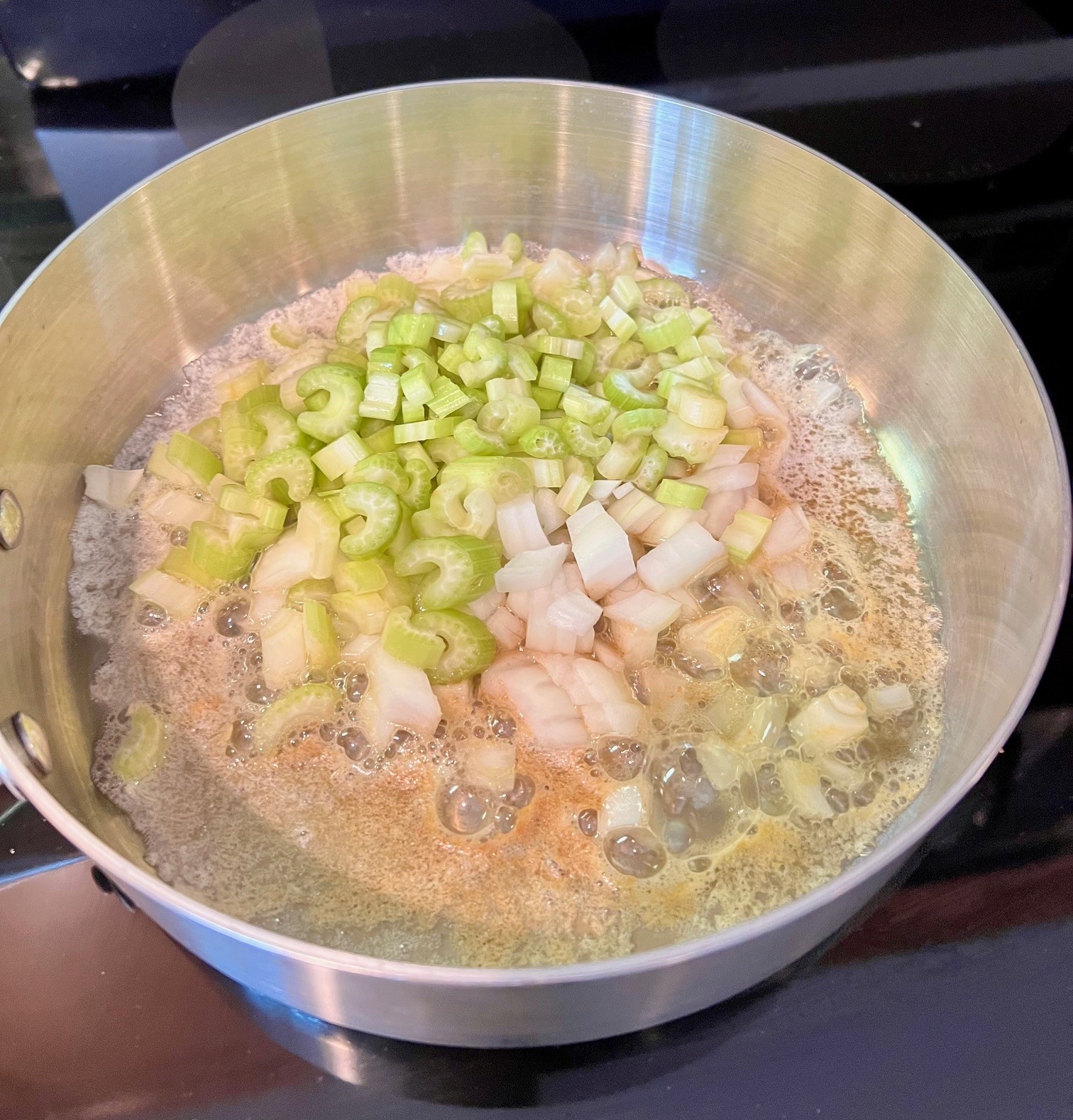
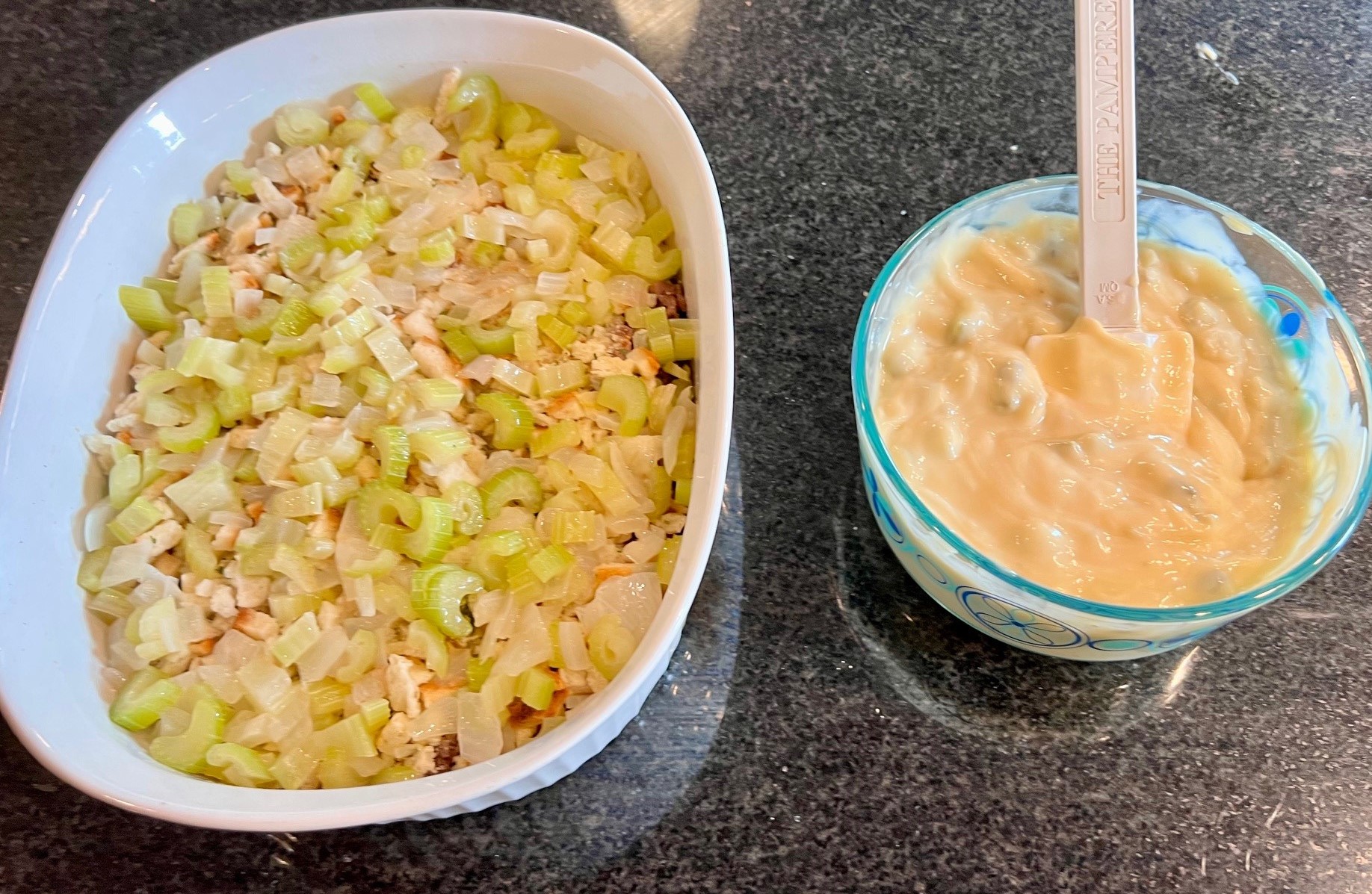
And the next part was a bit obscure as well, prescribing this technique: “blend soup and pour over top of mixture.” Perhaps everyone else knows what to do, but I wasn’t sure if “blend” meant to blend each can of soup as if you were cooking it on the stovetop—with a can of liquid of your choice—or whether you were to blend the two cans of soup together and then spread that on top, almost like a frosting. That’s what I did, since water had been added in the previous step. Finally, I slid it into the oven for an hour, let it rest for the prescribed fifteen minutes in the oven, and prepared a green salad as a side.
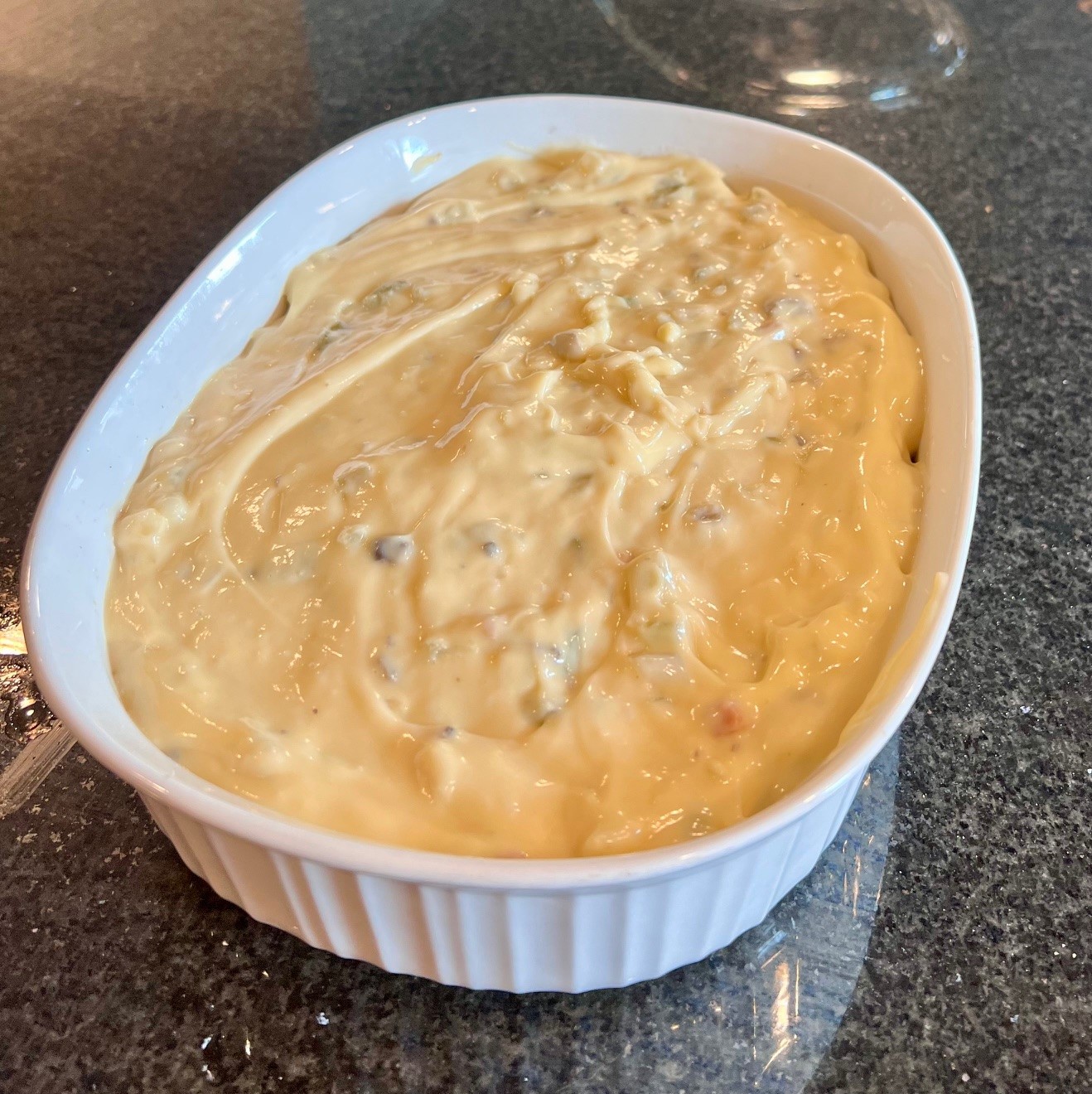
When it emerged from the oven, I was shocked. It was not aesthetically pleasing—brown, with a strange skin on top—like when the leftover cream-of-blank-soup congeals for too long on the stovetop. But, we bravely soldiered on, plating it as best we could, into heaps of hotdish next to our salads, and we dug in.
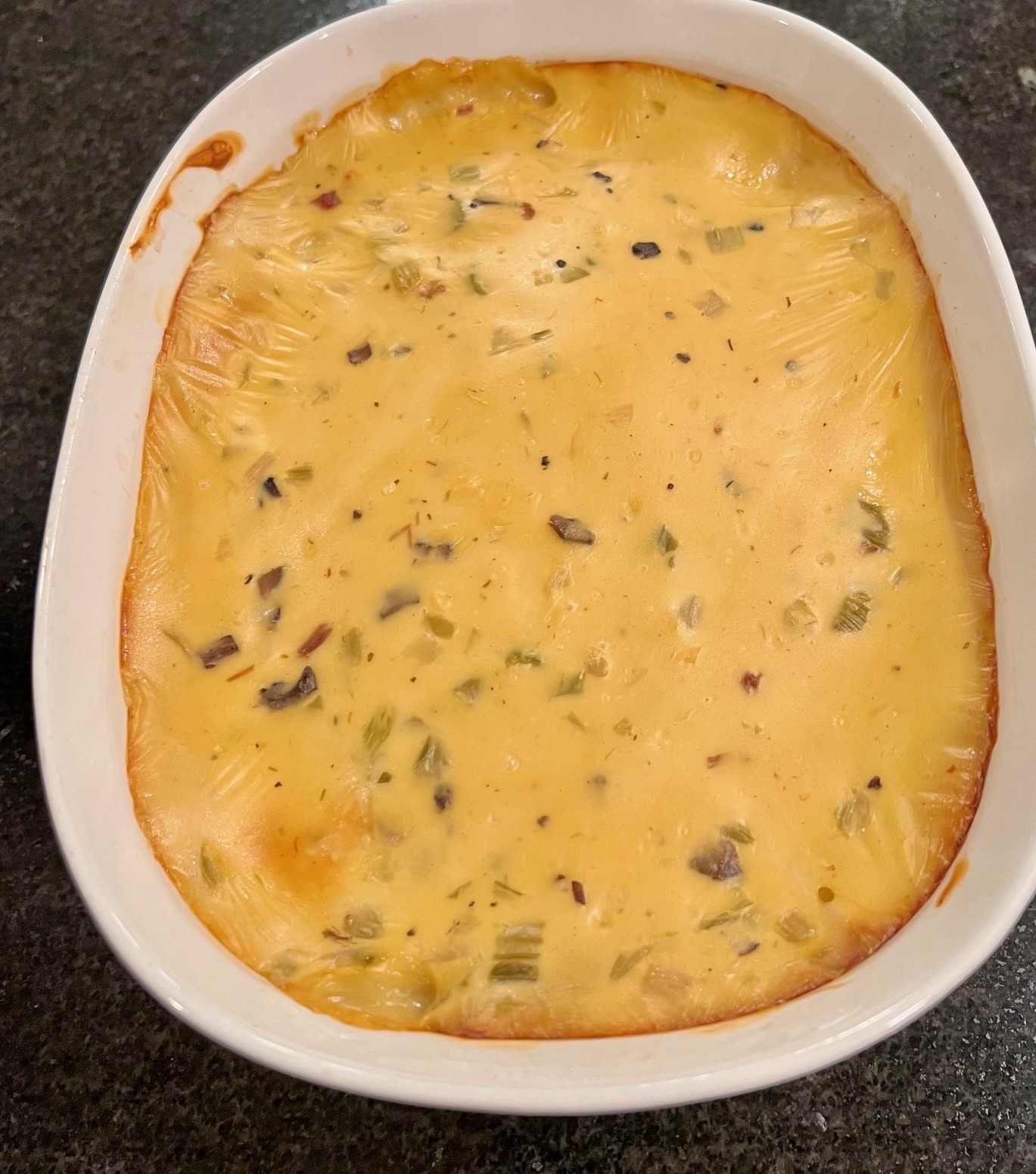
To our great surprise, it was tasty! My husband even had a second helping, noting that it’s basically stovetop stuffing, ground beef, and cream of chicken soup, all of which are good on their own. I imagine whoever originally concocted this dish thought, “well, why not together, then?”
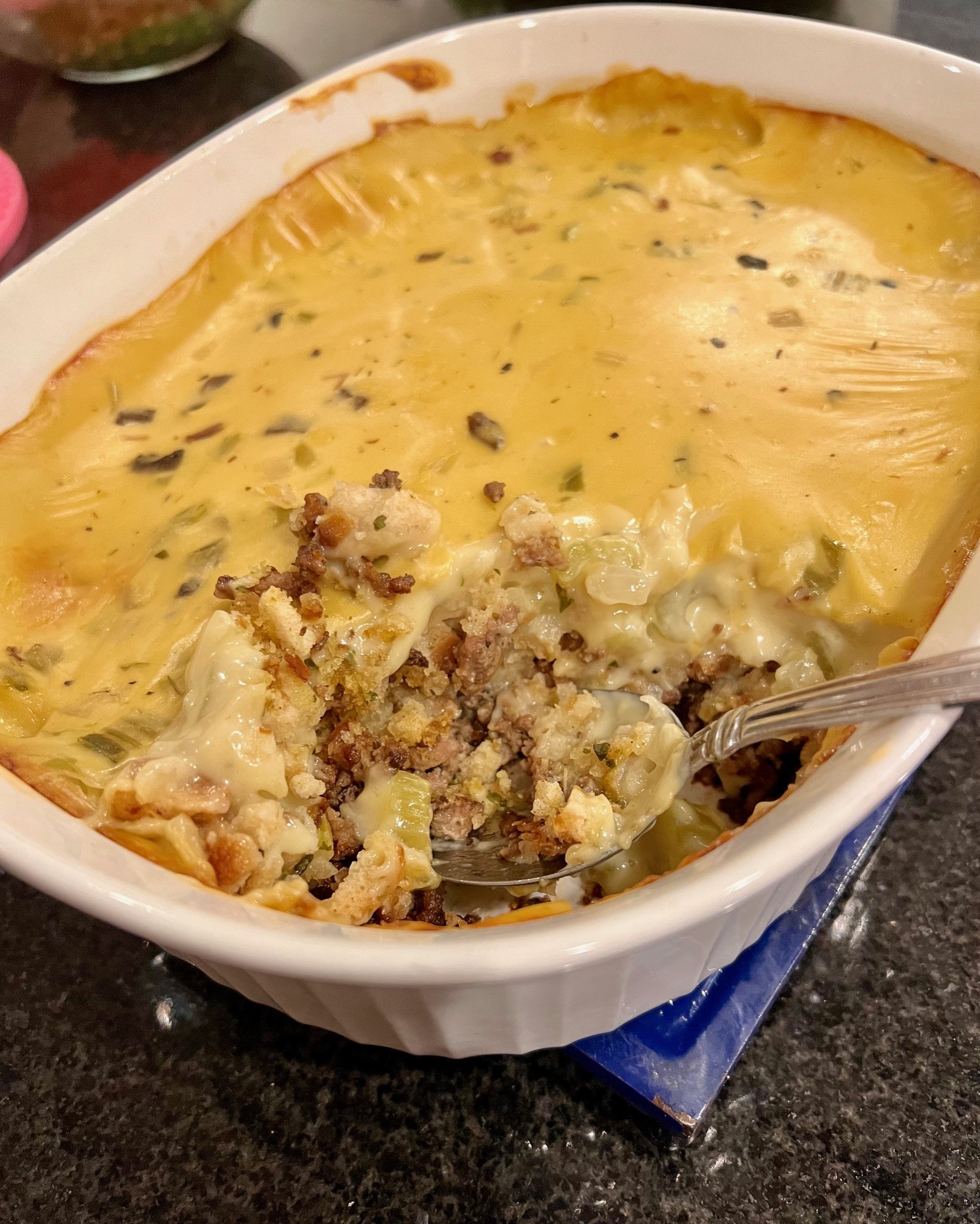
Why not, indeed? Maybe the hotdish’s appearance. And maybe the trifecta of processed, sodium-heavy ingredients: boxed stuffing and two varieties of canned soups.

This is apparently a thing
Neither my husband nor I had ever had this hotdish before, which is saying something for two people who grew up in North Dakota in the 1980s and 1990s. While new to us, this is apparently a popular dish in some circles, as an almost identical version of the recipe appears two pages before Irene Ave’s, and I’ve discovered it in other community cookbooks from North Dakota too. “Hamburger-Crouton Hot Dish,” contributed by Violet Repnow, produces the same dish, despite its attempt to disguise itself through a slightly different title and order of listed ingredients.

The only other discrepancy between the two recipes provided vindication of my decision to brown the meat, as Repnow includes the all-important adjective, “browned,” in the first line of instructions: “Layer browned hamburger and croutons in 9 x 13-inch pan.” Thank you, Vi, for that beautiful past participle.
This hotdish can also be found in the 1993 Velva School and Community Cookbook, submitted by Brad Wobbema, though not in the 2004 cookbook published for the town’s centennial. Using even the same title as Ave’s version, Wobbema’s contribution also omits Violet’s use of the past participle verbal, but prescribes oleo, offering less choice than Ave’s nod to those cooks who have a strong preference for margarine or butter.
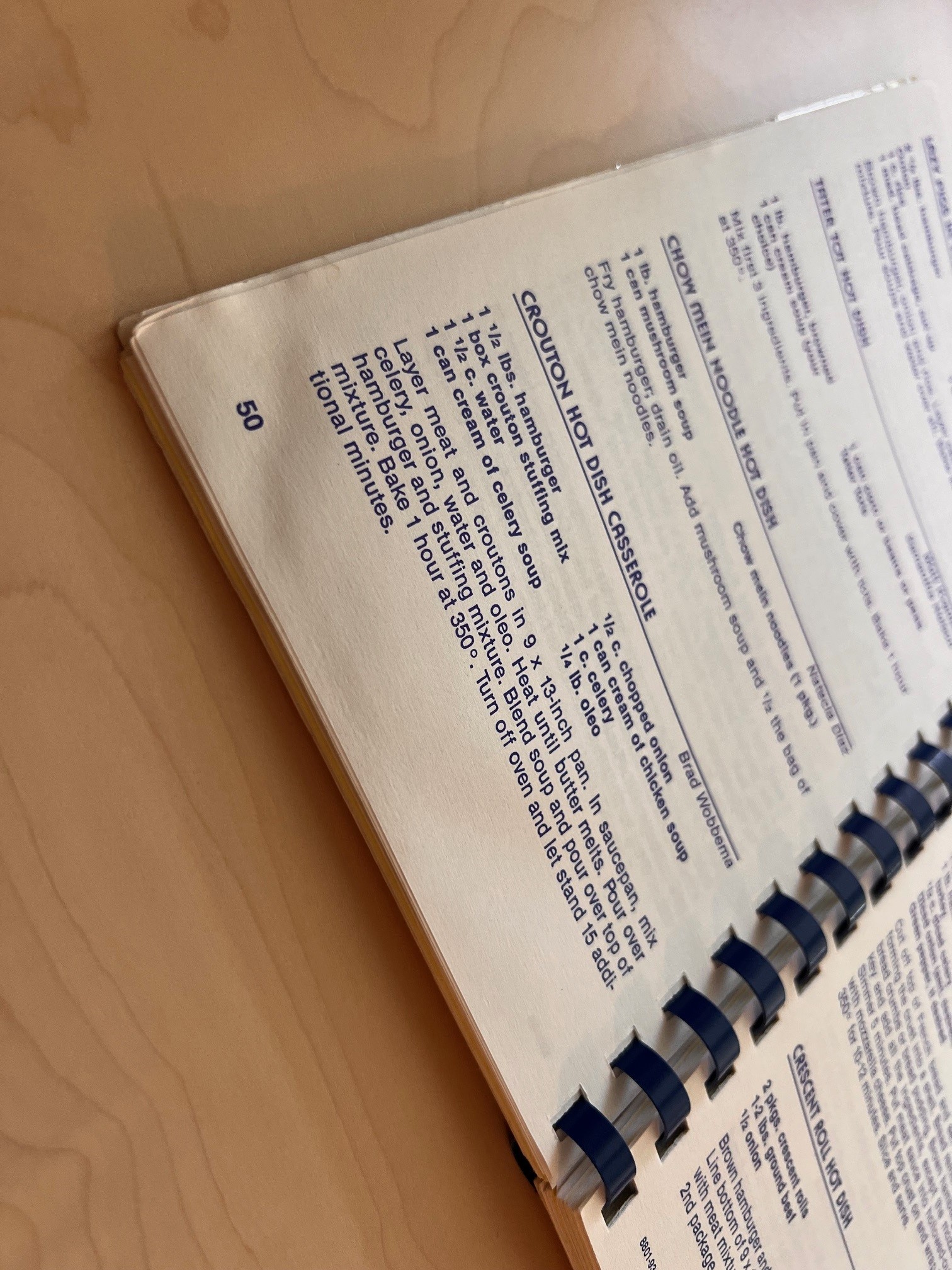
The dish could be duplicated in the southern part of North Dakota as well, given the recipe’s appearance in the 75th Anniversary Cook Book: 1905-1980 by A.L.C.W. of the Montpelier Lutheran Church, submitted by Barbara Nustad Huether. Brilliantly, Nustad Huether drops the redundancy of “casserole” from the title.
And though they retitled it “Mystery Hot Dish,” the Dexter FCE Club submitted a hamburger-crouton hotdish to Fun Cookin’ Everyday, a 1996 North Dakota-wide community cookbook of recipes submitted by the groups formerly known as Homemakers Clubs, currently referred to as Family and Community Education Clubs. With a “fun” nod to the organization’s new acronym, Fun Cookin’ Everyday was published by the North Dakota Association for Family & Community Education; both ND’s and the national FCE organization remain active today. Dexter FCE Club uses another past particle, declaring the use of “2 lb. uncooked hamburger.”
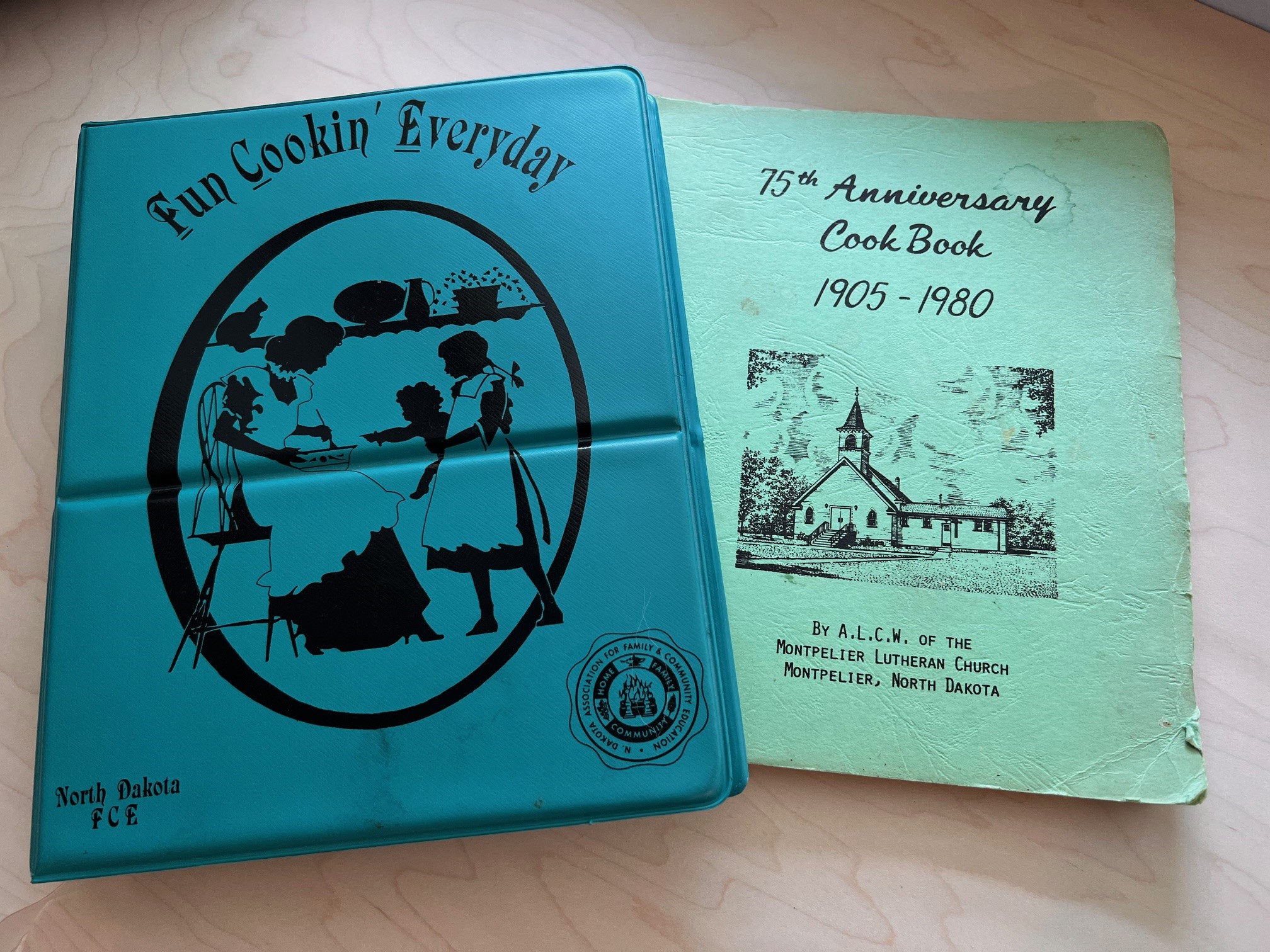
I’ve also found this recipe online at Cooks.com and Food.com, as well as in an interesting post at a blog called “The Audacious Cook,” who calls it “good old ‘Lutheran Lady Hotdish’” (http://www.theaudaciouscook.com/2013/01/crouton-hotdish.html). Though I can’t identify this writer’s location, she notes that she lives in a rural area, which tracks, given the nature of the recipe and its appearances in other cookbooks. It does not appear in The Joy of Cooking’s section on casseroles. I think a visit to community cookbook archives housed at several universities in the US is in order to see if this exists further afield.
Contributors: Irene Ave, Aunt, and Violet Repnow, Niece
Born May 9, 1916, Irene Ave was the daughter of William and Martha Ave, and the first of their three children to be born in North Dakota. William and Martha (Fritz) were both born in Germany, William in 1872; Martha in 1888. They married in 1906 in Adair, Iowa, where their first three children were born, prior to purchasing the Valentine Marquardt homestead in Brown Township, south of Velva, in 1913. Irene attended elementary school in Coulee School District and served as treasurer of that school district until 1948 when she moved to Velva. Her son, Larry, was born in 1955. Irene passed in April 2009. Her other contributions to The Joy of Sharing include “Banana Bars,” “Rhubarb Jam,” “Refrigerator Cabbage Salad,” and “French Fried Onion Rings.”
Violet Repnow was born Violet Hammer, on June 18, 1935, to parents Harold and Dora (Ave) Hammer. Dora was Irene Ave’s oldest sibling, ten years her senior. Born in December 1906, Dora passed at the age of ninety-nine, in March 2006. Though he was born in Enderlin, ND, Harold’s family moved from Enderlin to Brown Township in 1914, soon after the Aves. After marrying, Dora and Harold had two daughters, Violet and Hazel. In 1953, Violet married Delano Repnow, the son of Bertha Anderson and Walter Repnow, who lived further south, in rural Underwood. Making their home in Velva, the couple had six children, three sons and three daughters, while Delano worked at the William J. Neal Station electrical generating power plant outside of Voltaire. Delano passed in 1998, and Violet currently lives in Bismarck. Violet also submitted recipes titled “Sour Cream Twists” and “Angel Food Cake Dessert.”
Mystery solved. Hotdish with ground beef and croutons seems to have been a popular dish in this family.

This post is part of an ongoing series in which I make and reflect on recipes and the people who contributed them to the 1985 Oak Valley Lutheran Church compiled cookbook, The Joy of Sharing.

